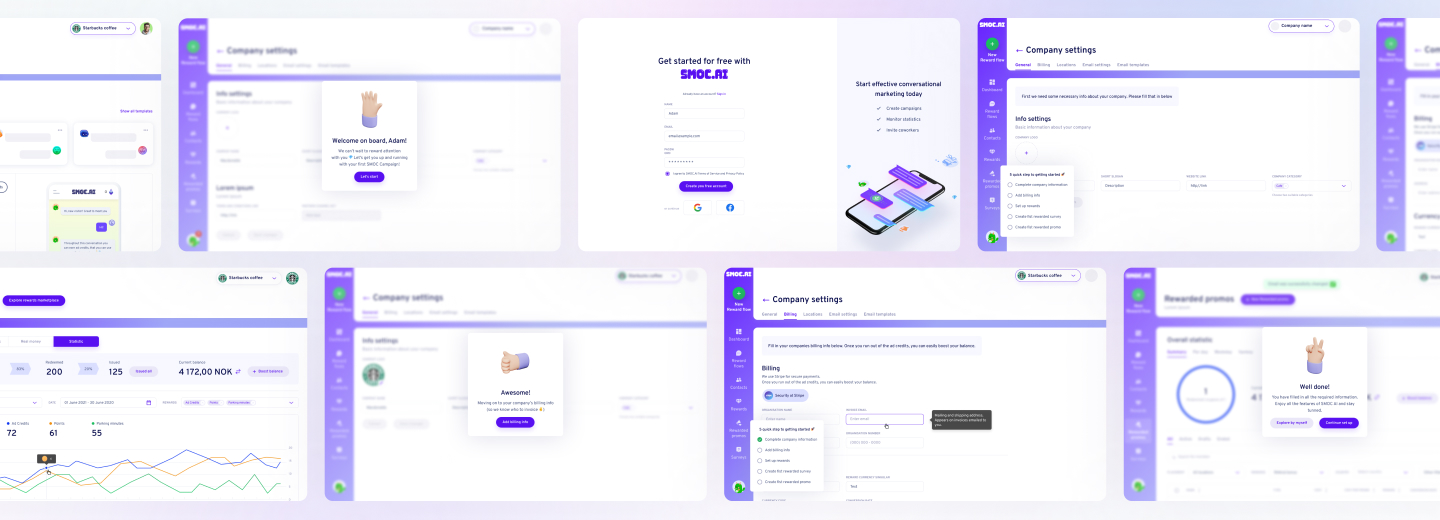Organizations often consider launching their Minimum Viable Product (MVP) as an exciting opportunity for business success. It’s your chance to test your concept, gather clients’ feedback, and optimize your product before a complete full-scale launch. MVP release by itself isn’t enough because measuring success enables idea validation and future development determination.
You need to understand whether your Minimum Viable Product functions effectively. Which MVP KPIs (Key Performance Indicators) will help you understand you’re on the right way? Focusing on the right data points makes all the difference between making a product thrive and declining.
In this article, we’ll discuss the key metrics on how to measure MVP success. Your data assessment will enable evidence-based growth decisions through measurements of user retention, engagement, customer feedback, and revenue acquisition.
what’s in the article
- What is “MVP Success”?
- Key Metrics to Measure MVP Success
- Conclusion
What is “MVP Success”?
MVP success refers to how effectively a Minimum Viable Product meets its main goals – idea validation, solving real challenges, and providing value to users. The way to the MVP success requires collecting meaningful feedback, and insights that enable future developmental decisions.
Product success depends on attracting early adopters to enjoy a basic operational solution that collects measurable data from users. Real long-term success in your business journey begins when your MVP demonstrates market readiness while enhancing your product through actual user data input.

Looking to Build an MVP without worries about strategy planning?
EVNE Developers is a dedicated software development team with a product mindset.
We’ll be happy to help you turn your idea into life and successfully monetize it.
Key Metrics to Measure MVP Success
The evaluation of appropriate MVP metrics is the basic for identifying whether your Minimum Viable Product meets its set goals. Your KPIs reveal important user engagement metrics that assess the product value of your business model. Let’s break down the essential MVP KPIs to measure the success of an MVP.
DAU (Daily Active Users)
The DAU (Daily Active User) measurement tracks the distinct number of users who use your product during each daily period. Your MVP’s success depends heavily on how frequently people find value in your MVP. A steadily growing DAU indicates your users value your product since they continue to use it. The initial growth of a successful MVP demonstrates between 5-7% weekly increases.
How to track it:
Track daily user login events, application sessions, and the essential actions users perform. Analyze time-based MVP data to determine whether user interest increases or decreases.
User Retention Rate
User retention rate is the number of users who continue to use your product over time. Your MVP demonstrates value to users when they keep using it. The industry view suggests that reaching 25-30% user retention after 90 days indicates that your product matches the market requirements.
How to track it:
The formula to determine this metric requires dividing your current user count from a specific period by your initial user base:
Formula:
Retention Rate (%) = (Users at End of Period ÷ Users at Start of Period) × 100
Conversion Rates
This metric monitors how many users complete a target action – such as user registration, subscription, or making a purchase. User needs will successfully match when your MVP shows high conversion rates. The conversion metrics of SaaS products range between 2-5% free-to-paid yet e-commerce platforms operate at a 1-3% conversion rate.
How to track it:
Follow up on essential user activities by counting the number of users who successfully achieve those key actions.
Formula:
Conversion Rate (%) = (Conversions ÷ Total Visitors) × 100
Bounce Rate
Bounce rate is the percentage of users who abandon your product without conducting significant actions represents bounce rate. A high bounce rate demonstrates that your users can’t find value in your MVP or navigate through it easily. The typical bounce rate for landing pages is 40-60% yet any figure exceeding these numbers might indicate problems.
How to track it:
Analyze user engagement through analytical tools to check how long users remain on the product and what actions they take toward essential features.
Customer Acquisition Cost
CAC is the expense to secure new customers and consists of all marketing costs and sales expenses. A company achieves lower CAC values when it acquires customers efficiently. New companies need to maintain Customer Acquisition Costs 3 times lower than their Customer Lifetime Value (CLV).
How to track it:
The total cost of your marketing and sales activities (e.g., ads, salaries, and software expenses) during a period should be divided by the number of new customers gained in that time.
Formula:
CAC = Total Marketing & Sales Costs ÷ Number of New Customers Acquired
Net Promoter Score
The NPS measurement system asks customers to rate their recommendation likelihood on a scale of 0 to 10 which determines satisfaction levels. Strong customer loyalty exists when your NPS rating surpasses 30 but your score needs improvement when it falls below 30.
How to track it:
Send regular NPS surveys and categorize responses:
- Promoters (9-10): Love your product.
- Passives (7-8): Neutral.
- Detractors (0-6): Unhappy.
Formula:
NPS = % of Promoters – % of Detractors
Churn Rate
Throughout a specific timeframe, the percentage of users who abandon your product is a churn rate. Your business suffers from rapid customer loss at a rate that exceeds new customer acquisition. The goal for a healthy SaaS product should be to maintain a monthly churn rate below 5%.
How to track it:
Determine your customer loss during a specified timeframe then divide it by your initial customer base to get the percentage. You can obtain the percentage value by multiplying the result.
Formula:
Churn Rate (%) = (Lost Customers ÷ Total Customers at Start) × 100
Burn Rate
Burn rate is the company’s money spending pace during a certain period before it achieves profitability. Controlling the burn rate stands as a critical element for sustaining your MVP through its funding period. New startups should establish their burn rate to extend at least 12-18 months of funding.
How to track it:
Use your monthly revenue to subtract from your monthly operating expenses for calculating money loss. The outcome from this calculation demonstrates the amount of money you lose during each month to show the speed at which your cash reserves decrease.
Formula:
Burn Rate = Monthly Operating Expenses – Monthly Revenue
Customer Lifetime Value
The CLV (Customer Lifetime Value) MVP criteria helps businesses predict all potential earnings from customers throughout their time as clients. Your MVP demonstrates long-term value generation when CLV exceeds CAC. For SaaS companies, the optimal relationship between CLV and CAC should be typically 3-5 times.
How to track it:
The product of ARPU and customer retention length provides your company’s value. Your business earns this amount from each client during their period as your customer.
Formula:
CLV = Average Revenue per User (ARPU) × Average Customer Lifespan
Annual Recurring Revenue
ARR is the annual revenue generated from subscription-based services. The clear financial outlook of your MVP becomes visible through this calculation. Startups experiencing rapid growth aim to achieve annual recurring revenue expansion greater than 100% during each yearly cycle.
How to track it:
You can determine your subscription-based yearly revenue by multiplying your Monthly Recurring Revenue (MRR) value by 12 months.
Formula:
ARR = Monthly Recurring Revenue (MRR) × 12

Proving the Concept for FinTech Startup with a Smart Algorithm for Detecting Subscriptions

Scaling from Prototype into a User-Friendly and Conversational Marketing Platform

Need Checking What Your Product Market is Able to Offer?
EVNE Developers is a dedicated software development team with a product mindset.
We’ll be happy to help you turn your idea into life and successfully monetize it.
Conclusion
The evaluation of your MVP success determines both strategic choices and long-term organizational growth. The performance of your product can be evaluated through Daily Active Users (DAU) statistics, User Retention Rate, Conversion Rates, and Customer Acquisition Cost (CAC) to determine user satisfaction and product development needs.
Multiple performance indicators together create a complete understanding of your MVP’s success because no one indicator correctly represents everything. The analysis of these MVP success metrics allows you to optimize your product while enhancing user experience which results in higher chances of product-market fit achievement.
The fast-moving startup environment requires businesses to use data as their primary guiding principle. Your success in transforming an MVP to a scalable product depends on measuring appropriate MVP metrics and responding to user feedback.
You should track user engagement metrics including DAU, retention rate, conversion rates, and customer feedback data. The definition of success involves an MVP that resolves genuine problems while keeping users engaged and demonstrating market-level interest.
Your MVP becomes ready for scaling after reaching stable user growth, high retention rates, and positive unit economics that demonstrate CLV > CAC. Strong customer feedback and a clear path to profitability are also key signals.
Your data collection should include the integration of Google Analytics (user behavior), Mixpanel (product analytics), Hotjar (user feedback), and HubSpot (customer tracking). The financial metrics need QuickBooks and Stripe to track performance effectively.

About author
Roman Bondarenko is the CEO of EVNE Developers. He is an expert in software development and technological entrepreneurship and has 10+years of experience in digital transformation consulting in Healthcare, FinTech, Supply Chain and Logistics.
Author | CEO EVNE Developers


















